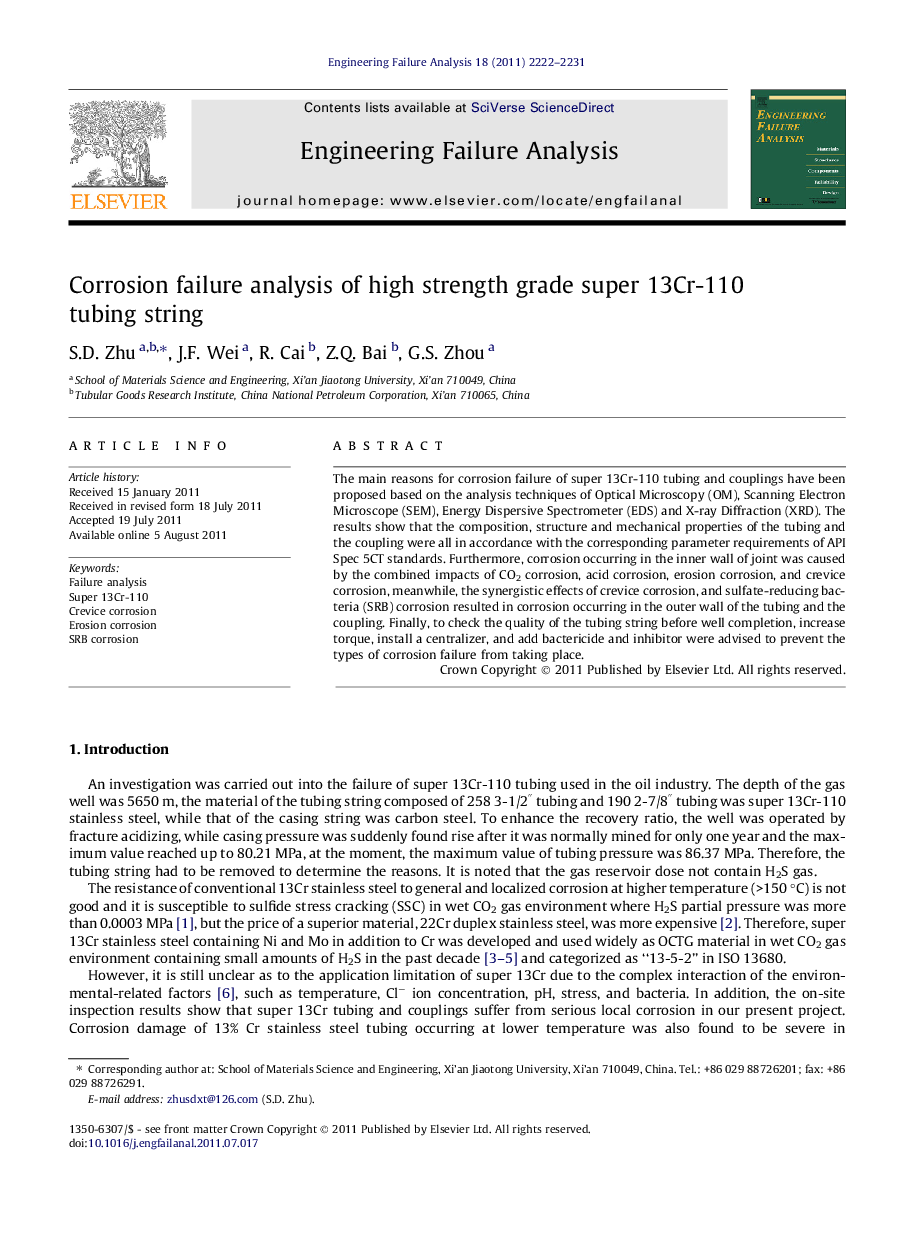| Article ID | Journal | Published Year | Pages | File Type |
|---|---|---|---|---|
| 768985 | Engineering Failure Analysis | 2011 | 10 Pages |
The main reasons for corrosion failure of super 13Cr-110 tubing and couplings have been proposed based on the analysis techniques of Optical Microscopy (OM), Scanning Electron Microscope (SEM), Energy Dispersive Spectrometer (EDS) and X-ray Diffraction (XRD). The results show that the composition, structure and mechanical properties of the tubing and the coupling were all in accordance with the corresponding parameter requirements of API Spec 5CT standards. Furthermore, corrosion occurring in the inner wall of joint was caused by the combined impacts of CO2 corrosion, acid corrosion, erosion corrosion, and crevice corrosion, meanwhile, the synergistic effects of crevice corrosion, and sulfate-reducing bacteria (SRB) corrosion resulted in corrosion occurring in the outer wall of the tubing and the coupling. Finally, to check the quality of the tubing string before well completion, increase torque, install a centralizer, and add bactericide and inhibitor were advised to prevent the types of corrosion failure from taking place.
► The reasons for corrosion failure of super 13Cr tubing and coupling were analyzed. ► The combined impacts of a variety of corrosion were the main reasons. ► Design defects and human factors also contributed to this corrosion failure. ► Sorts of protective measures were advised based on the analysis of corrosion failure.
